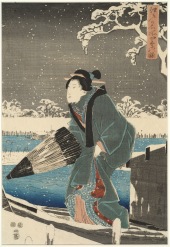 Roughly
150 years ago in Europe, Impressionist and young Post- Impressionist
artists were first delighting in the ukiyo-e,
wood-block prints from Japan.
Roughly
150 years ago in Europe, Impressionist and young Post- Impressionist
artists were first delighting in the ukiyo-e,
wood-block prints from Japan.
These images portrayed popular Japanese actors and courtesans, illustrated well-known stories and plays, showed views of landscapes with everyday people, and documented scenes from ordinary life. These inexpensive prints were wildly popular in Japan, and became a huge influence on 19th Century European artists. These prints changed art history, and as surprising as they seem now, they were even more startling in mid-19th Century Europe.

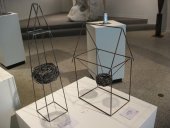 There
is a delicious communication between an artist and an audience
through the created works. The movement of ideas into art gives off
meanings that we, the audience, can then discover from our own
understanding.
There
is a delicious communication between an artist and an audience
through the created works. The movement of ideas into art gives off
meanings that we, the audience, can then discover from our own
understanding.
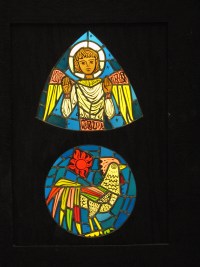 Sixty works to represent any artist's life would usually be a major retrospective, but for the late Father Edward M. Catich, it's only a glimpse. Catich (1906-1979) was an artist, a scholar, a bookmaker and printer, a master calligrapher, a stone carver, a sign painter, a creator of fonts, a great teacher, a stained-glass window maker, a musician on many instruments, a coin collector, a painter, a traveler, an orphan, a child of the Depression, and a parish priest.
Sixty works to represent any artist's life would usually be a major retrospective, but for the late Father Edward M. Catich, it's only a glimpse. Catich (1906-1979) was an artist, a scholar, a bookmaker and printer, a master calligrapher, a stone carver, a sign painter, a creator of fonts, a great teacher, a stained-glass window maker, a musician on many instruments, a coin collector, a painter, a traveler, an orphan, a child of the Depression, and a parish priest.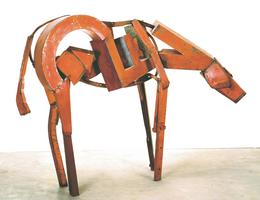 Deborah
Butterfield's famous horse sculptures - 16 of which are currently
being exhibited at the Figge Art Museum - are created from gathered
steel or bronze or wood and formed into horses of great beauty and
spirit. There is an elemental surprise that her horses are made this
way - abstract and yet real, freely formed and yet completely
descriptive. Her sculptures become living, breathing creatures before
our senses, expressing the horses' strength and power and also their
delicacy and silence. They will remain on the third and fourth floors
of the Figge through May 27.
Deborah
Butterfield's famous horse sculptures - 16 of which are currently
being exhibited at the Figge Art Museum - are created from gathered
steel or bronze or wood and formed into horses of great beauty and
spirit. There is an elemental surprise that her horses are made this
way - abstract and yet real, freely formed and yet completely
descriptive. Her sculptures become living, breathing creatures before
our senses, expressing the horses' strength and power and also their
delicacy and silence. They will remain on the third and fourth floors
of the Figge through May 27.
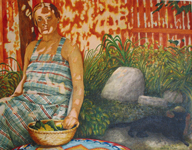 How
do you choose from thousands of paintings, illustrations, and
drawings to represent a lifetime of making art? How can one express
an artist's wide range of vision in only 53 pieces?
How
do you choose from thousands of paintings, illustrations, and
drawings to represent a lifetime of making art? How can one express
an artist's wide range of vision in only 53 pieces?
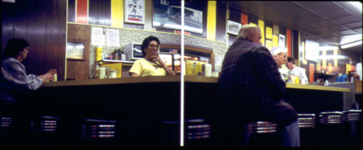 Camus
once said that all artists try to reproduce in their work the most
moving experiences of their past. By using these memories as a
starting point, artists and writers give a delicious emotional energy
to their work. These events can then be constructed, modified, and
embellished to suit their ideas and images.
Camus
once said that all artists try to reproduce in their work the most
moving experiences of their past. By using these memories as a
starting point, artists and writers give a delicious emotional energy
to their work. These events can then be constructed, modified, and
embellished to suit their ideas and images.
 Leonardo
da Vinci was famous for improvising poetry while playing the lute.
Mozart and Beethoven were legendary for their spontaneous piano
inventions. And blues and jazz musicians have always loved the
ability to create new combinations of music or words while playing.
Leonardo
da Vinci was famous for improvising poetry while playing the lute.
Mozart and Beethoven were legendary for their spontaneous piano
inventions. And blues and jazz musicians have always loved the
ability to create new combinations of music or words while playing.
 Most
of us remember our grade-school art classes, in which we cut up
construction paper or magazine photographs and glued them together to
make a collage. Few of us thought then that we were making art, for
it seemed so much fun.
Most
of us remember our grade-school art classes, in which we cut up
construction paper or magazine photographs and glued them together to
make a collage. Few of us thought then that we were making art, for
it seemed so much fun.
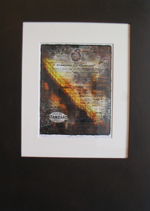 Jim
Riesberg's most recent series of large-format collages originated
from an auctioned four-pound box of vintage photographs, musty old
invoices, advertisements, and water-stained inventory sheets from a
hardware store that had been in business in the 1880s. By scanning
and combining these written and visual sources, he has created a
many-layered body of images, full of emotion.
Jim
Riesberg's most recent series of large-format collages originated
from an auctioned four-pound box of vintage photographs, musty old
invoices, advertisements, and water-stained inventory sheets from a
hardware store that had been in business in the 1880s. By scanning
and combining these written and visual sources, he has created a
many-layered body of images, full of emotion.
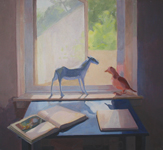 Three
excellent young painters - Sara Fletcher, Sarah Goffstein, and
Greta Songe - shine in their current exhibition at the Leger
Gallery in downtown Davenport. Former students of Ron Cohen at the
University of Iowa, they are all at the beginnings of their teaching
careers. These artists are well on their way in establishing their
personal styles in art, and all have something individual to say
about experience and memory. One artist is influenced by the light
and stillness of Vermeer, another by the colors and patterns of the
artist Vuillard, and the third by the flowing music of nature.
Three
excellent young painters - Sara Fletcher, Sarah Goffstein, and
Greta Songe - shine in their current exhibition at the Leger
Gallery in downtown Davenport. Former students of Ron Cohen at the
University of Iowa, they are all at the beginnings of their teaching
careers. These artists are well on their way in establishing their
personal styles in art, and all have something individual to say
about experience and memory. One artist is influenced by the light
and stillness of Vermeer, another by the colors and patterns of the
artist Vuillard, and the third by the flowing music of nature.








